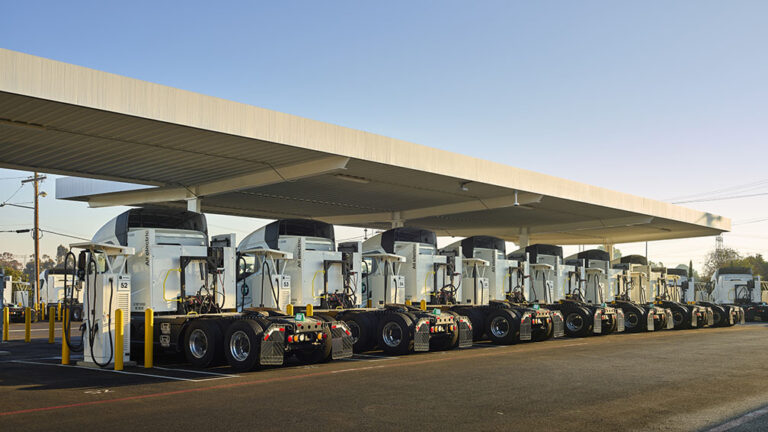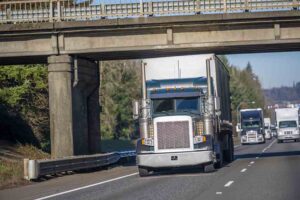PALO ALTO, Calif. — Federal funding has been set aside to expand charging infrastructure at ports in Georgia and California. Voltera announced April 26 that it will receive $9.6 million from the Federal Highway Administration (FHWA) through the Reduction of Truck Emissions at Port Facilities (RTEPF) program.
The funds will be used to develop sites near the ports of Savannah, Georgia, and Los Angeles and Long Beach, California. The Savannah project will receive $7.8 million of the funds; California will receive $1.8 million.
Each site will be built from the ground up, and electric vehicle (EV) charging will be offered to customers via multiple contracting models. Voltera says these port projects will help accelerate the transition to zero-emission freight operations by supporting the electrification and decarbonization of crucial logistics hubs, as designated through the recently released U.S. Zero-Emission Freight Corridor Strategy.
“The assistance from the administration and state and local government agencies has been critically helpful,” said Matt Horton, CEO of Voltera. “Having a roadmap in terms of how to roll out freight corridors allows us to catalyze a lot of investment from the private sector to complement the incentives that the government has provided.”
Developed in partnership with Georgia Power, Voltera’s Savannah site will deliver up to 23 megawatts (MW) of charging capacity and feature more than 120 charging stalls to accommodate Class 8 electric drayage trucks that service the Port of Savannah. At high utilization, Voltera estimates a reduction of up to 37,000 metric tons of emissions per year via this site.
Voltera’s charging site in Wilmington, California, is adjacent to critical connection routes to the Port of Los Angeles and Port of Long Beach. The Wilmington site will feature 20 charging stalls for Class 8 electric trucks and deliver up to 4 MW of charging capacity. Voltera estimates a reduction of up to 6,300 metric tons of emissions per year via this site. This site has also received funding from the South Coast Air Quality Management District.
“This is great news for Wilmington and our port communities,” said Congresswoman Nanette Barragán (CA-44). “We struggle with unhealthy air and negative public health impacts from port pollution, much of it from the thousands of diesel-burning trucks that bring goods to and from the Port of Los Angeles every day. Our communities will benefit directly from the Jobs and Infrastructure Law through this federal investment in electric truck charging. We will be able to reduce emissions at our port, create good paying jobs, and improve our communities’ public health.”
Los Angeles City Councilmember Tim McOsker (CD-15) also applauds the project.
“Our Harbor Area communities, especially Wilmington and San Pedro, have long suffered from poor air quality due to their proximity to the port complex of LA and Long Beach, especially from idling truck engines as they travel through our neighborhoods,” McOsker said. “With this funding from the Biden Administration, it will give us a real opportunity to work with private sector companies like Voltera Power to reach our goal of cleaning the air for these surrounding port communities. Funding such as this makes clear that from the federal government in Washington D.C. to local government at City Hall that, protecting our communities from the environmental injustices caused by an industrial port complex should be a priority for us all.”
Voltera is responsible for 21 charging projects that are either in development or already operating across the U.S. Earlier this year, Voltera announced it had invested approximately $150 million in private investment in zero-emission vehicle (ZEV) infrastructure real estate and was developing over 115 MW of charging capacity for ZEV fleets.
Born and raised in Little Rock, AR, Erica N. Guy decided to stay in her hometown to begin her professional career in journalism. Since obtaining her bachelor’s degree from UAPB, Erica has professionally written for several publications about several topics ranging from lifestyle, tech, culture, and entertainment, just to name a few. Continuing her love for her hometown, she joined our team in June 2023, where she is currently a staff writer. Her career goals include continuing storytelling through her writing by being the best professional writer she can be. In her spare time, Erica enjoys trying new foods, cozying up with a good book, spending time with family and friends, and establishing herself as a future businesswoman.








